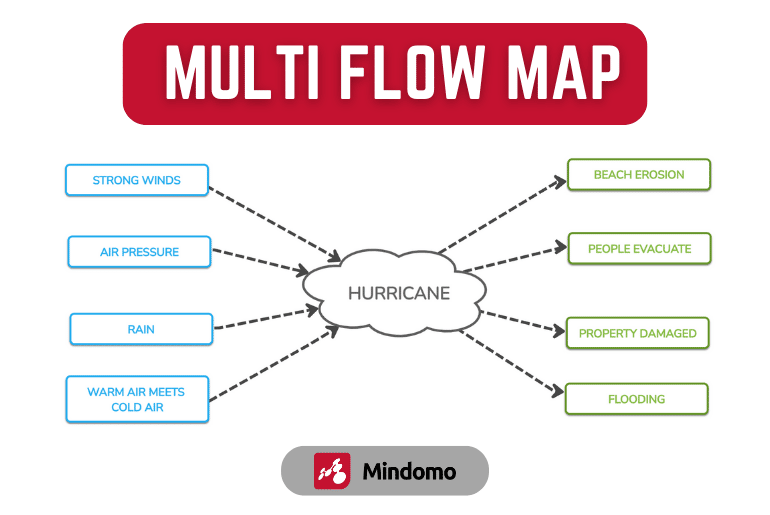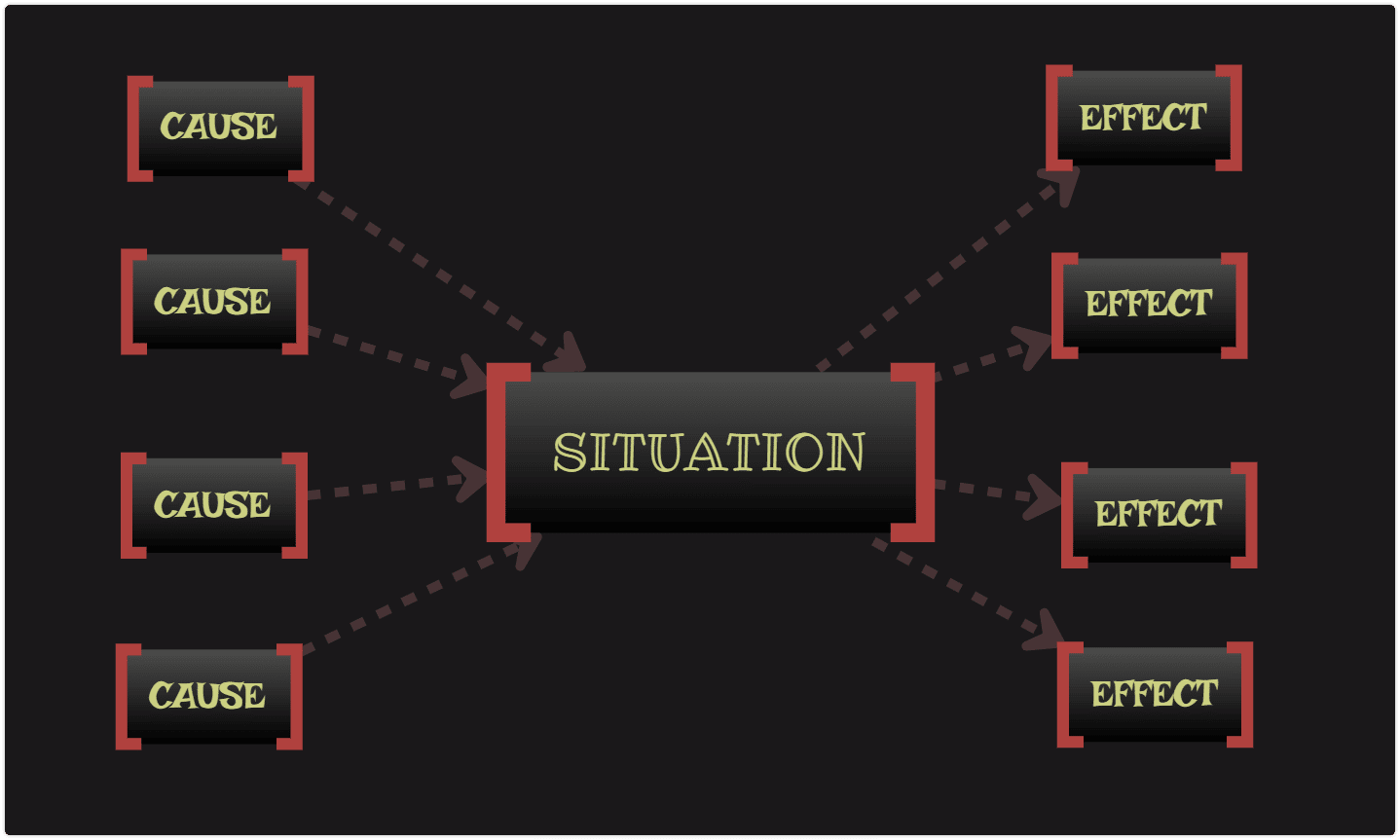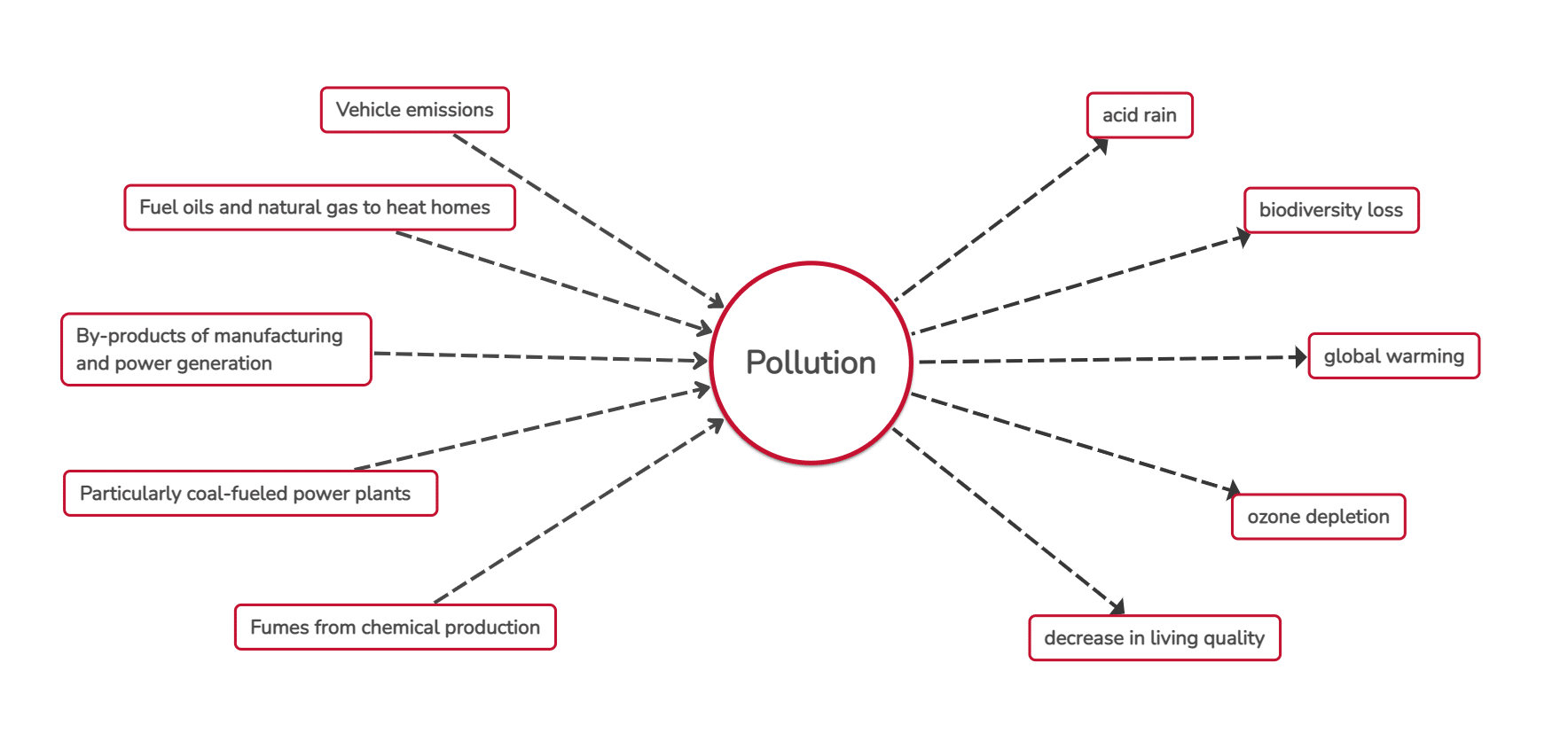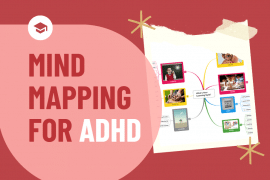
Very few events happen in isolation. Most causes have causes themselves. And effects often turn into causes. In other words, life is complicated. But a multi-flow map can turn all of that complexity into clarity.
Whether you’re a business owner, app developer, or someone who wants to understand something better, multi flow maps can help. Read on to discover what a multi flow map is and how you can take advantage of them. Along the way, you might even see some mind map examples and come to understand the multi flow maps benefits.
What is a Multi-Flow Map?
Mind maps are diagrams used to visually organize thoughts and information. Typically, they include a central topic, with related ideas branching out from the center. But there isn’t just one kind of mind map. There are dozens. And one of the most useful, especially for analyzing cause-and-effect relationships, is the multi flow map.
Traditional mind maps are often linear in nature, with each branch representing a sequential step. Multi-flow mind maps, on the other hand, can show the relationships between ideas in a more flexible way. As a result, they can be helpful for exploring potential solutions to a problem.

A multi-flow mind map is a type of graphic organizer that examines relationships. Normally, there’s a main idea in the center of the map. This could be anything, from a war’s first shot fired to a stock market crash. But it doesn’t just have to be a historical event. It could be something scientific. Or a plot point in a book. Or the release of a new product. Or literally anything else.
Once the main event has been established, a multi flow map examines its causes. To the left of the main event, those causes are listed. Some may be major, while others minor. But all of them had to occur for the main event to take place. On the right hand of the event, the effects are listed. Multi flow maps allow you to see all of these different cause-and-effect relationships at a glance.
What is a flow map used for?
Looking for good mind map ideas? Multi-flow maps can be used for a variety of tasks. They can:
- Help you analyze a problem and find its root cause.
- Outline the implications of various decisions.
- Show relationships between different elements in an experiment or process.
- List out different steps in a process, visualizing the role each step plays in the whole.
- Aid in decision making by breaking down the pros and cons of each option.
- Show how multiple variables can influence an outcome.
In short, multi flow maps are powerful tools for understanding and analyzing complex situations. This is why they’re particularly helpful in learning and business contexts.

What are the three types of flow maps?
All flow maps analyze the relationships between causes and effects. However, there are three different ways to focus on them.
You can use a multi flow map to focus on analyzing the causes of a particular event. This kind of digital mind map is created by spending more time looking at those causes. Every possible cause is listed, analyzed, and noted for its impact. This may be particularly helpful if you’re trying to understand all the causes of something. It can also help to visualize how those causes interplayed with one another.
You could also create a graphic organizer flow map that spends an equal amount of time on causes and effects. This wouldn’t focus on one or the other but would give weight to both. This would be helpful if you’re just trying to understand the overall flow of the event.
Finally, you could create a mind map that focuses on the effects of an event. Perhaps you’re not really interested in why something happened. Instead, you want to understand the results. This is the perfect way to do just that.
What are some practical uses of multi-flow maps?

Multi flow maps can be used for a variety of tasks. That’s why there are so many mind map examples out there. But if you want to get specific, here are some ways you can use them:
- Businesses can use them to analyze customer feedback and make better decisions.
- Scientists can use them to track the progress of an experiment and explore potential solutions.
- Teachers can use them to evaluate students’ understanding of a particular topic.
- Marketers can use them to map out the relationships between different products or services.
- Historians can use them to trace the evolution of an event.
- Designers can use them to examine the relationships between different elements of a design project.
- Organization leaders can use them to track progress and review goals.
- Journalists can use them to map out the relationships between different pieces of a story.
- Analysts can use them to evaluate data and draw conclusions.
- Politicians can use them to understand the implications of various policies.
- Engineers can use them to track performance and troubleshoot problems.
In short, multi-flow maps can be used in almost any field where understanding relationships and analyzing data is important. They are valuable tools that allow you to visualize and analyze complex systems quickly and effectively. If you do a little brainstorming, you can probably come up with even more mind map ideas.
How do I get started with creating my own multi-flow mind map?
Multi-Flow Mind Maps are a powerful tool for brainstorming and organizing ideas.
Fortunately, you don’t have to wait to start creating them. You can create your own with nothing more than a piece of paper or whiteboard. However, there are better ways.
Digital mind map diagram software allows you to create your mind map online. Mindomo is a great tool for creating multi flow maps. With its easy-to-use interface, you can create your map quickly and easily. You can also add images, videos, audio files, documents, and links to help you visualize the relationships between different elements. And you don’t have to be an expert mind mapper to get started.
Mindomo offers multiflow map templates that will get you started. Simply choose a multi flow map template and edit it however you want. Add additional levels to the map, providing more detail for each idea. Finally, connect the different ideas with arrows or lines to show how they relate to one another. Keeping the overall structure of the map simple and straightforward is easy with Mindomo.
By following these steps, you’ll be well on your way to creating your own effective Multi-Flow Mind Map. When you’re through, you can share your map with others to get feedback or collaborate.
That’s the power of a mind map maker like Mindomo.
Creating a multi-flow map can help you better understand and analyze complex situations. With the right tool, it’s easy to do. Try Mindomo today and see how this powerful tool can help you get more out of your data.
Keep it smart, simple, and creative!
The Mindomo Team






